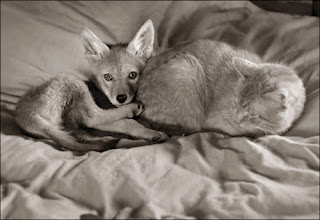But first, I can't resist passing on my favorite of the many tributes to Mandela in the past days, from The Onion:
"JONANNESBURG--Following the death of former South African president and civil rights leader Nelson Mandela today at the age of 95, sources confirmed that the revered humanitarian has become the first politician in recorded history to actually be missed." (Note: I can so imagine Mandela chuckling at this one!)
Please consider sharing one or more of these books on one of history's great men with your family or classroom:
 |
| Nelson Mandela (Kadir Nelson) |
Nelson Mandela: Long Walk to Freedom, Chris Van Wyk, editor. (Flash Point, 2009). A picture book adaptation of Mandela's own autobiography. More information than Kadir Nelson's book, but still suitable for elementary school children.
Floyd Cooper. Mandela: From the Life of the South African Statesman (Puffin, 2000). Beautifully illustrated picture book for upper elementary school students.
Meg Belviso, Pamela Pollack. Who Was Nelson Mandela? (Grosset & Dunlap, 2014) A new addition to the highly popular Who Was series, this comes out next June (undoubtedly it will be quickly updated with his passing). This series of brief "chapter book" biographies is great for 3rd grade and up.
Yona Zelda McDonough. Peaceful Protest: The Life of Nelson Mandela (Walker Children's, 2006). Reviews call this picture book biography "easy to read but engaging."
Barry Denenberg. Nelson Mandela: No Easy Walk to Freedom (Scholastic, 2014). An updated version of an earlier biography of Mandela, this will go up to his recent passing. Aimed at grades 5-8, this is an in-depth view of Mandela's life for young people.
In addition to these, there are several graphic novels on Mandela, including: Nelson Mandela: The Authorized Comic Book (2009) from the Nelson Mandela Foundation; Nelson Mandela: The Unconquerable Soul, by Lewis Helfand, and manga-style Nelson Mandela (Great Figures in History series) from Y-Kids.
For middle school and high school students, as well as adults, I recommend:
Mandela: An Illustrated Autobiography (Little Brown, 1996), an abundantly illustrated, abridged version (at a very manageable 200 pages) of Mandela's famous autobiography Long Walk to Freedom.
On a lighter note, families will enjoy sharing Nelson Mandela's Favorite African Folktales, personally selected by Mandela. The stories come from all over Africa and are handsomely illustrated by a variety of artists.
I was fortunate enough to visit the beautiful country of South Africa two years ago and join all Mandela's countrymen in remembering and celebrating a great human being. Rest in peace, Madiba.






































